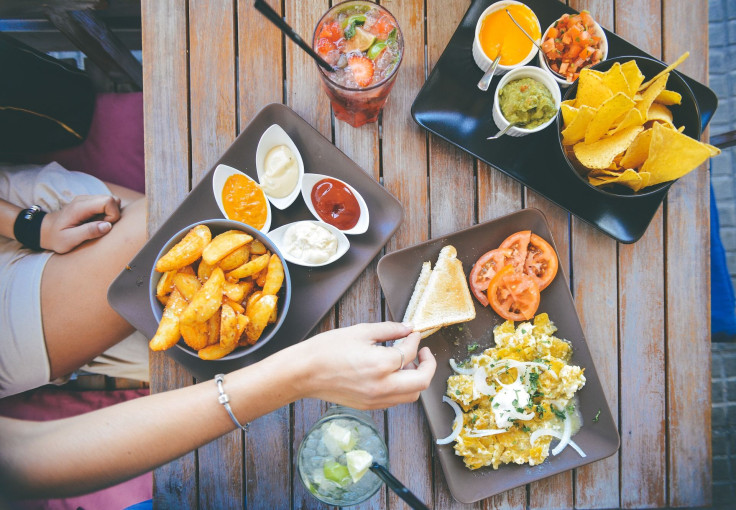‘Fat’ Food Nation: 92% Of Restaurants Serve Calorie-Packed, Oversized Meals

In America, our favorite meals are heavier and more calorie-dense, and packed with far more sodium and fat, than probably anywhere else in the world. While we may often associate these unhealthy meals with fast food and chain restaurants, a new study shows that the problem is far more widespread, affecting even local, non-chain restaurants. The study, published in the Journal of the American Academy of Nutrition and Dietetics, finds that 92 percent of restaurant meals go beyond the calorie recommendations for a single meal.
Past research has shown that people who go out to eat end up consuming far more calories in fat, sugar, and sodium than people who eat at home. And it’s not just the McDonald’s and Burger Kings out there that deliver super-sized meals of lard right to your car window that are to blame; Olive Garden, Panera, and other chain restaurants not typically considered “fast food” may be even more unhealthy.
“Although fast-food restaurants are often the easiest targets for criticism because they provide information on their portion sizes and calories, small restaurants typically provide just as many calories, and sometimes more,” Susan Roberts, director of the Energy Metabolism Laboratory at the Jean Mayer USDA Human Nutrition Research Center on Aging at Tufts University, and an author of the study, said in the press release. “Favorite meals often contain three or even four times the amount of calories a person needs, and although in theory we don’t have to eat the whole lot in practice most of us don’t have enough willpower to stop eating when we have had enough.”
The Tufts researchers reviewed 364 different restaurant meals in Boston, San Francisco, and Little Rock between 2011-2014. They examined a wide array of cuisines, including American, Chinese, Greek, Italian, Japanese, Mexican, Thai, and Vietnamese. They found that 92 percent of all 364 meals measured exceeded the recommended caloric intake for a meal — which should be anywhere between 300-500 calories depending on a person’s level of physical activity.
Most moderately active women should be consuming some 2,000 calories per day, and moderately active men should be consuming around 2,600-2,800 calories per day. However, the study found that among 123 restaurants across the three cities studied, some single meals (not even counting drinks or desserts) held well over 2,000 calories on one plate.
“These findings make it clear that making healthy choices while eating out is difficult because the combination of tempting options and excessive portions often overwhelm our self-control,” Susan Roberts, director of the Energy Metabolism Laboratory at the Jean Mayer USDA Human Nutrition Research Center on Aging at Tufts University, and an author of the study, said in the press release.
To avoid the inevitable unhealthy foods at restaurants, cook at home more often, as this has been shown to be healthier and reduce calorie intake. Other research finds that meditating or being mindful while eating can prevent over-eating.
Source: Roberts S, et al. Energy Contents of Frequently Ordered Restaurant Meals and Comparison with Human Energy Requirements and US Department of Agriculture Database Information: A Multisite Randomized Study. Journal of the American Academy of Nutrition and Dietetics, 2016.



























